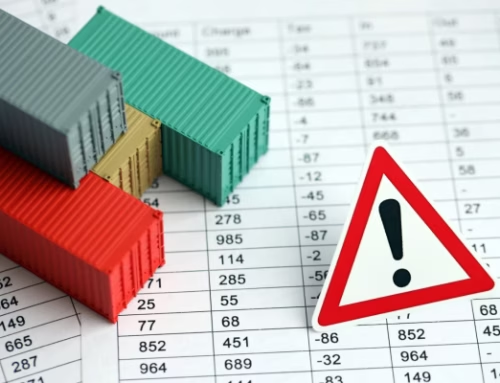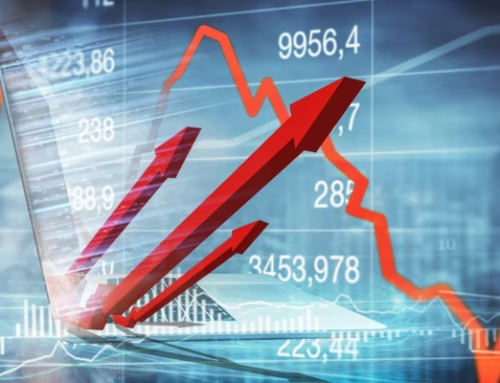The world is splitting in two. The West, led by the US, and the autocrats, led by China. This will permanently impact supply chains and is long-term inflationary. The Saudis are moving to China’s camp.
In 2000, the US was the top trading partner for most of the world. Today that has completely flipped, with China being the top trading partner for all but North America, part of Europe (not all) and a few South American nations. In terms of trade, the globe has flipped from blue (US) to red (China).
The US made an error in weaponizing the US dollar and the global payment system. That will force non-US investors and nations to diversify their holdings outside of the traditional safe haven of the US.
We are in a war economy, where goods are frequently not available on demand and substitutions may be necessary. US consumers have not adjusted to this reality. The global economy faces structural challenges today. Too much debt and bond markets are rejecting actions that increase debt (UK gilt market as an example).
The US will see a mild recession in 2023. The UK and eurozone will endure a severe recession. China is already in a severe recession. Felix likens China today to Japan in the ‘90s. They had an over-expansion of credit and now have a broken financial system that will take at least a decade to resolve. The COVID lockdowns are merely camouflage to hide China’s economic weakness.
The next 10 years will see a roller coaster in the stock markets combined with serious geopolitical tension and conflict. Investors will need to be tactical—buy and hold will disappoint.
In the near term (Q1 2023), we may see new market lows due to earnings disappointments. Bond yields will rise. Inflation will drop as companies unload a glut of inventory in the global supply chain.
The sun will rise. The system will reset.
US Economy
- The November PPI report surprised to the upside, with the core PPI climbing by 0.4% last month.

- On a year-over-year basis, the PPI growth is trending lower.

- Inflation typically peaks during recessions and decelerates afterward, lagging the GDP.
- BofA expects a recession next year as demand crumbles.

- Credit growth has been robust. But banks appear to be curbing lending amid recession concerns.

- Nationwide’s economic projections show a GDP decline in 2023 (for the full year), which is well below the FOMC’s projections from September. The FOMC is likely to downgrade its forecast this week.

- With the recession looming, the market expects deeper rate cuts after reaching the terminal rate.

- Business investment is expected to slow rapidly.

- The November CPI report came in below expectation as inflation moderates.

- The CPI was negative when shelter (rent) is excluded.
- Housing rent inflation is still a problem (2 charts).


- While the CPI slowdown is good news, absolute price levels have risen massively over the past couple of years, putting pressure on US households.
- February Fed rate hike is now looking more like 25 bps rather than 50 bps.
- Small businesses are cutting back on hiring plans as a recession still looms for next year.

- The AEI Housing Center expects a 10-15% decline from the June peak.

- The Q4 GDPNow model estimate declined to 2.8% (annualized). Forecasters see growth at around 1%.

The Fed
The Fed is plowing ahead with more interest-rate hikes anyway – maybe one or two more after the one the central bank announced today. Fed Chair Jerome Powell said so at the start of a press conference today.
“We’ve covered a lot of ground, and the full effects of our rapid tightening so far are yet to be felt. Even so, we have more work to do.”
The nitty-gritty of today’s Fed announcement – coming out of the central bank’s two-day policy meeting – is that it raised its benchmark lending rate by 50 basis points to a range of 4.25% to 4.5% and is continuing to trim its balance sheet.
This was largely expected.
But as we mentioned yesterday, the thing to watch that could move the markets would be the economic projections by Fed board members and presidents for next year and the years following.
They project a median real GDP growth of 0.5% next year compared with the 1.2% they thought in September. Their unemployment figure is a bit higher at 4.6% versus the 4.4% projection three months ago… an estimate that means 1.6 million Americans out of work.
Meanwhile, the Fed expects core inflation to be higher in 2023 – 3.5%, by its preferred measure – than it indicated before (3.1%).
Trimmed-mean CPI:

That’s not exactly a bullish picture. And yet the Fed says rates and the costs of doing business will keep going up…
Most Fed board members seem to see the benchmark fed-funds interest rate hit a minimum of 5% next year, then remain above 4% in 2024 and above 3% in 2025.
Historically, there is a five-month lag between the peak CPI and the last Fed hike.
And they don’t see the core personal consumption expenditures (“PCE”) index of inflation getting below 3% until 2024 or close to 2% until 2025, despite inflation coming down from its peak in the summer. As Powell said…
“ We made less progress than expected on inflation. That’s why unemployment goes up because we’re having to tighten policy more… That’s the idea: slower progress on inflation, tighter policy, probably higher rates, probably held for longer just to get to where you need to get inflation down to 2%.”
Yet on the other hand, in its written statement announcing its policy moves today, the Fed said…
“ The Committee is strongly committed to returning inflation to its 2 percent objective.”
It doesn’t add up, or maybe it does. Fed members are committed to an economy with 2% inflation, but they’re not expecting it to happen anytime soon – and certainly not next year while unemployment rises and growth slows. It’s right there, written out for anyone to see.
To me, this means at least another 50-basis-point hike is coming at the Fed’s next policy meeting to get close to 5%… followed by another 50- or 25-point raise depending on the central bank’s mood in the early part of the new year.
And then still inflation will be higher than 2% for the next three years… unemployment will be heading higher next year… and economic growth will slow in general. Powell stopped short of saying the Fed is projecting a recession, but he did say…
“ It won’t feel like a boom. It will feel like very slow growth.”
In his comments, Powell said more rate hikes will be coming, although the speed of them is not a priority anymore… and he noted 17 or 19 Federal Open Market Committee (“FOMC”) members expect a peak rate of 5% or more. But he also said rates could eventually go higher…
“ That’s our best assessment today for what we think the peak rate will be. You will also know that at each subsequent SEP during the course of this year, we actually increased our estimate of what that peak rate will be. And today the SEP shows overwhelmingly FOMC participants believe that inflation risks are to the upside, so I can’t tell you confidently that we won’t move up our estimate of the peak rate again at the next SEP. I don’t know what we’ll do. It will depend on future data.”
In other words… everything will depend on the path of inflation and, as Powell also said, whether monetary policy is “restrictive enough” to cool higher prices. And he’s not saying it now, but it will also depend on how much damage comes with that.
We’ll find out as the next few months – and years – unfold.
Following a 50 bps hike today, Hank Smith, head of investment strategy at Haverford Trust, sees a 25 bps rate increase in February and possibly another quarter-point hike in March. Then “we’re going to have a pause and allow for the lag effects of this monetary tightening to play through,” he said in an interview with Seeking Alpha. The Fed will also be careful not to call it a pivot and “whatever the terminal rate is – whether it’s five, five and a quarter percent – it’s going to stay there for a period of time, most likely through 2023.” As for how the Fed’s policy will affect investing, Smith expects continued volatility in equity and fixed income markets given his outlook for a mild and brief recession in the middle of next year.
Market Data
- The S&P 500 downtrend resistance held after the CPI report.

- The 10-year Treasury yield is testing support.

- Maybe a peak in the dollar?

- This chart shows Barclays’ inflation forecasts for 2023.

- Tech layoffs:
![]()
- Investment managers have been increasing their exposure to stocks.

Quote of the Week
“What are the factors that gave rise to investors’ success over the last 40 years? We saw major contributions from (a) the economic growth and preeminence of the U.S.; (b) the incredible performance of our greatest companies; (c) gains in technology, productivity, and management techniques; and (d) the benefits of globalization.
However, I’d be surprised if 40 years of declining interest rates didn’t play the greatest role of all.”
– Howard Marks, Oaktree Capital Management
Picture of the Week

All content is the opinion of Brian J. Decker





